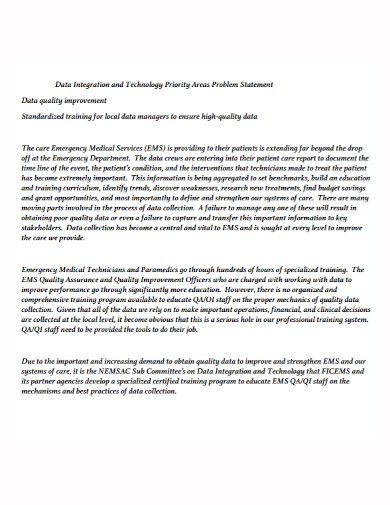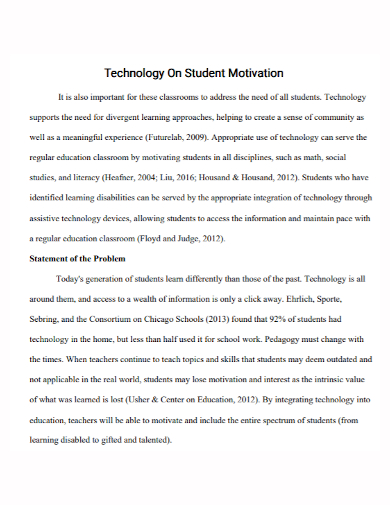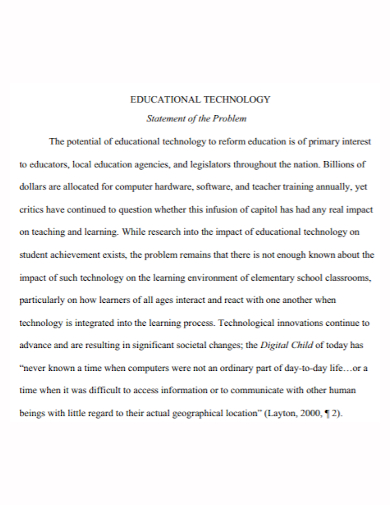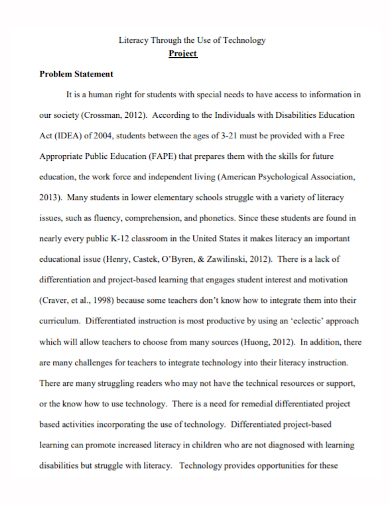In their businesses or for their clients, experts in continuous improvement are responsible for recognizing and implementing solutions to problems that arise. The collection of a diverse variety of instruments, approaches, methods, and techniques is their intended manner of achieving this goal. The ability to predict and achieve effective results in their work is essential for continuous improvement practitioners. They must be able to establish the winning conditions for change in order to succeed. They say that the devil is in the details, which is true, which makes working in continuous improvement both exciting and tough at the same time, to use a popular expression. A “little devil” that gets forgotten all too frequently when it comes to improvement projects is the requirement to draft an effective issue statement at the outset of each project.
The process improvement efforts of a significant number of enterprises and organizations are employed to bring about improvements in the way in which they run their business and operational activities. A process improvement project’s effectiveness is influenced by a wide range of factors, but one of the most important factors to consider is the identification of the problem that needs to be addressed. Working on process improvement initiatives may be quite time-consuming, so understanding what a problem statement is and how to develop one can be really beneficial. For the purpose of demonstrating what a problem statement is and the most important components of a problem statement, this article offers an example of a problem statement in its entirety.
5+ Technology Problem Statement Samples
1. Technology Research Problem Statement
2. Technology Priority Problem Statement
3. Student Technology Problem Statement
4. Educational Technology Problem Statement
5. Technology Project Problem Statement
6. Technology Investment Problem Statement
What Is a Technology Problem Statement?
According to Alan Bryman, who authored an essay that was published in the International Journal of Social Research Methodology, the following is an adaptation of that work. A problem is a situation in which there is cause for concern, a condition that has to be corrected, a challenge that needs to be handled, or a worrisome question that exists either theoretically or practically. In its most basic form, a problem statement is a succinct summary of the problem or hurdles that the project is aiming to overcome. According to the issue description, it is necessary to identify the present state, the expected future state, as well as any gaps that may exist between the current and projected states. When it comes to project communication, a problem statement is essential because it ensures that everyone participating in the project is aware of the problem they are aiming to solve, as well as the relevance of the project as a whole.
Elements of a Technology Problem Statement
When it comes to the success of a process improvement project, a problem statement is essential since it assists in the identification of the project’s objectives as well as the definition of the project’s scope. The direction of the project is also aided by the actions and choices made by the persons who are participating in the project. By generating a problem statement, a firm or organization may gain support and buy-in for a process improvement project and move the project forward.
- Ideal Situation
Prior to anything else, while drafting your issue statement, think about what the ideal condition would be if there were no problems that needed to be addressed. The aims and scope of the project, among other things, are outlined in this section. Table of Contents If the reader can form a clear vision of what the ideal environment will look like once the problem has been fixed, then this part will be of great assistance. - Reality
You should describe the present state of affairs in your company or organization in the next section of your issue statement if your firm or organization is currently coping with a problem. Specifically, it will define the problem, explain why it is a problem, and identify the individuals who are impacted by the condition described in this section. The report will also include specifics about when and where the problem was discovered. - Consequences
What are the long-term repercussions of the current circumstances? This topic should be addressed in the next portion of your problem description, after the introduction. The impacts of the situation on persons who are impacted by it are explained here, as is a quantitative assessment of the amount to which the problem is impacting those who are affected by it. One of the most common outcomes of business choices is the waste of time, money, or resources, as well as the loss of competitive advantage or productivity, among other things. - Proposal
Consider that the proposal component of a problem statement may contain a number of reasonable solutions to the problem; but, it is not required to present a single solution to solve the problem. When it comes to success, the proposal section should instruct the project team on how to assess, research, and respond to the problem in order to achieve the desired results. In the proposal section, you should be brief and direct to the point with your arguments.
FAQs
What is in a problem statement?
A disparity between the current state-level of performance and that which is expected to be achieved at some point in the future should be explicitly stated in the problem description as something that should be avoided. The problem description should offer absolute or relative measures of the problem that quantify the gap between them, rather than probable causes and treatments, like in the example above.
Why is it so hard to write a problem statement?
A significant challenge in producing a compelling problem statement is dealing with the multiple distractions that might arise from a variety of sources. Exceptional issue statements must be devoid of any and all causes, treatments, or blame, and they must also be carefully reviewed to ensure that symptoms do not become a distraction from the main focus of the problem while composing them.
How to write a problem statement?
- Identify the problem
- Begin your statement with your ideal situation
- Describe current gaps
- State the consequences of the problem
- Propose addressing the problem
Being able to develop a compelling issue statement is not just a valuable business competence, but it is also a necessary life skill. Without a precise understanding of their issues, how can children, adolescents, and adults begin to work toward overcoming their obstacles? Particularly pertinent to those who operate in the field of continuous growth is the fact that It is widely believed that the 5W2H strategy is ineffective. It appears to be deceptively straightforward on the surface (what, when, where, why, who, how, and how much). Take the required procedures to ask the appropriate questions in the appropriate order, and the answers you receive will take you to a wonderful issue formulation.
Related Posts
FREE 10+ Marketing Problem Statement Samples [ Strategy, Digital, Social Media ]
FREE 10+ Medical Problem Statement Samples [ Surgical, Nursing, Management ]
FREE 10+ Payoff Statement Samples in PDF | DOC
FREE 10+ Scholarship Statement of Purpose Samples in PDF | DOC
FREE 10+ Engineering Problem Statement Samples [ Software, Mechanical, Civil ]
FREE 30+ Information Statement Samples in PDF | MS Word
FREE 50+ Policy Statement Samples in MS Word | Google Docs | PDF
FREE 50+ Summary Statement Samples in PDF | MS Word
FREE 10+ Nursing School Personal Statement in PDF
FREE 9+ Mortgage Statement Samples and Templates in PDF
FREE 10+ Independent Subcontractor Statement Samples in MS Word | Google Docs | Apple Pages | PDF
FREE 10+ Trust Distribution Statement Samples in PDF
FREE 14+ Compliance Statement Samples & Templates in PDF | MS Word
FREE 10+ Extension Impact Statement Samples in PDF | DOC
FREE 10+ Bank Reconciliation Statement Samples and Templates in PDF | MS Word






